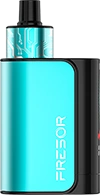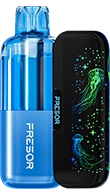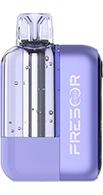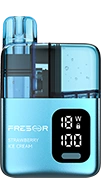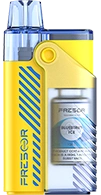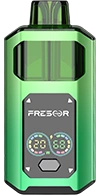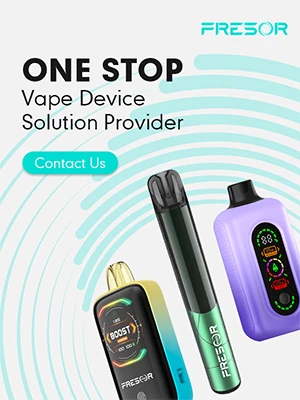Synthetic Nicotine vs. Tobacco-Derived Nicotine: A Comparison

21 March 2024
Synthetic nicotine and tobacco-derived nicotine are both used in products like e-cigarettes, vapes, and nicotine gums. While they might seem similar because they both give the body nicotine, the way they are made is very different. Synthetic nicotine, also called tobacco-free nicotine, is made in a lab, while nicotine from tobacco leaves comes directly from plants. This comparison examines what makes them different and how each type is used.
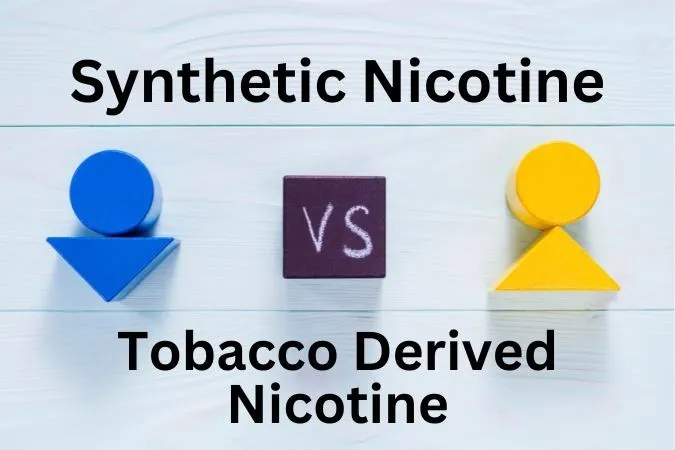
What is Synthetic Nicotine?
Synthetic or non-tobacco nicotine (NTN) is nicotine created in a laboratory through chemical processes. Unlike traditional nicotine, it is not derived from tobacco plants but instead produced artificially. This means that it does not contain any of the impurities or additives found in natural tobacco-derived nicotine.
How is Synthetic Nicotine Produced?
Synthetic nicotine is produced through a multi-step chemical process. It starts with a base chemical compound, such as pyridine, which is then modified and transformed into nicotine molecules. This process can be done using various methods, such as fermentation or organic compound synthesis.
One key benefit of producing synthetic nicotine is that it allows for more control over the final product. Purity and potency can be carefully regulated to ensure a consistent, high-quality product.
Characteristics and Properties
Synthetic nicotine has several key characteristics and properties that distinguish it from traditional tobacco-derived nicotine.
Purity: Synthetic nicotine is often purer than nicotine derived from tobacco because it lacks the impurities that naturally occur in a tobacco leaf.
Consistency: It offers a consistent quality and potency, making it preferable for precise formulations in nicotine replacement products.
Flavor: Synthetic nicotine lacks the residual compounds found in tobacco; it does not impart any tobacco flavor, making it ideal for flavored e-liquids.
Regulation and Control: The production process allows meticulous control over the nicotine content, enabling manufacturers to create nicotine products with specific strengths.
Legal and Regulatory Implications: Synthetic nicotine may fall under different regulations than tobacco-derived nicotine, affecting how nicotine-containing products are marketed and sold.
What is Tobacco-Derived Nicotine?

Tobacco-derived nicotine, also known as naturally extracted nicotine (NEN), is the traditional form of nicotine derived from tobacco leaves. It has been used for centuries in various forms, such as smoking or chewing tobacco, to deliver nicotine to the body.
Extraction Process
The extraction process for tobacco-derived nicotine involves harvesting and curing tobacco leaves, followed by various extraction methods. One standard method is solvent extraction, where solvents like hexane or ethanol dissolve and extract the nicotine from the leaves.
Another method is plant-based extraction, which uses water or other natural substances to extract nicotine from a tobacco leaf. This process is often preferred for organic and natural tobacco products.
Characteristics and Properties
Tobacco-derived nicotine has some distinct characteristics and properties that set it apart from synthetic nicotine.
Impurities: Unlike synthetic nicotine, tobacco-derived nicotine products can contain contaminants, such as residual pesticides or other chemicals used in the growing process.
Inconsistency: The level of potency and quality can vary depending on the type of tobacco plant and extraction method used.
Flavor: The flavor of tobacco-derived nicotine is heavily influenced by the type of tobacco plant it is extracted from, giving it a distinct tobacco taste.
Limited Control: Due to its natural origin, there is limited control over the exact levels of nicotine in tobacco-derived products, making it more difficult for precise formulations.
Regulation and Control: Tobacco-derived nicotine products fall under the same regulations as tobacco products, which can vary depending on location and may restrict marketing and sales.
Overall, tobacco-derived nicotine and non-tobacco nicotine both have their advantages and disadvantages. While synthetic nicotine offers more control and consistency in the production process, tobacco-derived nicotine has a distinct flavor and is often seen as a more natural option.
Synthetic Nicotine Products Vs Tobacco Products
As the popularity of youth vaping continues to rise, consumers have more options than ever when it comes to nicotine products. Vape brands offer a variety of products, including vapes and e-cigarettes that contain tobacco-free nicotine or tobacco-derived nicotine.
Additionally, there are now options like synthetic nicotine pouches and oral nicotine pouches that offer a smokeless alternative to traditional tobacco products.
Synthetic nicotine pouches, also known as oral nicotine pouches, are made with synthetic nicotine and other ingredients like flavorings and sweeteners. They do not contain tobacco and are often marketed as a smokeless alternative to traditional tobacco products. On the other hand, tobacco products, such as cigarettes or chewing tobacco, use natural nicotine from tobacco leaves.
Health Effects
One of the main differences between these two products is the potential health effects. Synthetic nicotine pouches are relatively new, and their long-term effects on health are not yet fully known. In contrast, a tobacco product is linked to various adverse health consequences, including cancer and heart disease.
Production Process
Another difference is the production process. Synthetic nicotine production does not involve harvesting or curing tobacco plants, making it more environmentally friendly than traditional tobacco products. It also offers more control over the nicotine content, making it easier to tailor products to individual preferences.
Flavor
Regarding flavor, synthetic nicotine products do not taste like traditional tobacco products. Instead, they come in various flavors, such as mint or fruit, making them more appealing to those who do not enjoy the taste of tobacco. However, some may prefer the familiar taste of tobacco, making traditional tobacco products a more desirable option.
Regulation and Control
When it comes to regulation and control, synthetic nicotine pouches may be subject to different laws than tobacco products. This can affect how they are marketed and sold, with some countries banning or restricting the sale of certain nicotine-containing products. Therefore, consumers must know their local regulations before purchasing any nicotine product.
Types of Synthetic Nicotine Products
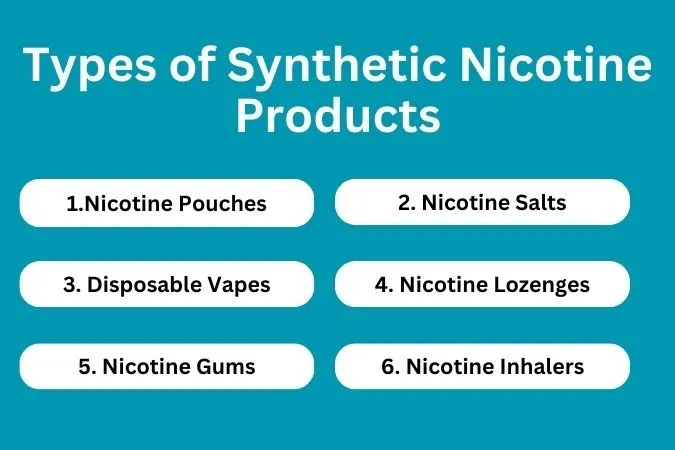
Besides synthetic nicotine pouches, there are several other types of products that use tobacco-free nicotine. Some famous examples include:
1. Nicotine Salts
Nicotine salts are formed by combining freebase nicotine with an organic acid, resulting in a smoother hit and quicker nicotine delivery than traditional e-liquids. They're commonly used in electronic cigarettes and pod mod systems and are appealing to those looking for a fast-acting high concentration of nicotine.
Nicotine salts have played a significant role in the recent surge of compact, high-nicotine vaping devices, providing a smoother experience at high doses that mimics traditional cigarettes.
The advancement in nicotine salt technology has been a game-changer for those looking to satisfy their craving quickly and effectively.
2. Disposable Vapes
Disposable vapes are single-use vaping devices generally pre-filled with e-liquid. They come in a variety of flavors and nicotine strengths, making them popular among new vapers and those looking for a convenient and discreet option.
The use of synthetic nicotine in disposable e-cigarettes offers a consistent and regulated nicotine experience, helping brands avoid the complexities and restrictions associated with the use of natural nicotine.
This convenience factor has led to a surge in their popularity, especially among casual users, and as an entry point for people trying to quit smoking.
3. Nicotine-Freebase
While not technically synthetic, nicotine in its freebase form is the most common type of nicotine found in e-liquids. It was the first form of nicotine used in vaping, offering good bioavailability but sometimes presenting a harsher throat hit at higher concentrations.
Nicotine-free base e-liquids have a pH closer to neutral, making them less volatile, more palatable, and easier to vaporize. They remain popular for their versatility and compatibility with a wide range of devices and the ability to customize nicotine concentrations for a tailored vaping experience.
4. Synthetic Nicotine E-Liquids
Designed for use in e-cigarettes, synthetic nicotine e-liquids offer vapers the ability to enjoy the act of smoking without the need for natural tobacco. These e-liquids come in a range of nicotine strengths, catering to both first-time vapers and experienced enthusiasts.
Synthetic nicotine in e-liquids provides manufacturers with flexibility, especially in regions where the sale of nicotine-containing products is restricted or higher quality and non-tobacco ingredients are preferred.
5. Synthetic Nicotine Lozenges
Similar to the nicotine replacement therapies approach, synthetic nicotine lozenges are discreet and easily used products that deliver controlled doses of nicotine. Their purpose is to help smokers reduce the craving and withdrawal symptoms often associated with quitting smoking.
By leveraging the benefits of synthetic nicotine, lozenges aim to offer a more controlled experience that can be tailored to individual needs and preferences. They provide an alternative option for those who seek nicotine replacement therapies without the inclusion of tobacco.
6. Synthetic Nicotine Gums
Nicotine gum is a well-established method for helping smokers quit, but traditional nicotine gums contain natural nicotine and are labeled as pharmaceuticals due to their intended use.
Synthetic nicotine gums provide a middle ground between conventional nicotine replacement therapies and consumer nicotine products available in various flavors and nicotine strengths.
They cater to the growing population that prefers smoke-free alternatives and offer a user experience closely aligned with that of traditional nicotine gums with the benefits of synthetic nicotine.
7. Synthetic Nicotine Inhalers
For those who want a product closely mirroring the ritual of smoking, synthetic nicotine inhalers can provide an experience akin to traditional smoking without smoke or tobacco. Inhalers deliver nicotine in a fashion familiar to most smokers, making them a potentially effective tool for smoking cessation.
Although the market for synthetic nicotine inhalers is relatively nascent, their potential is significant, especially with the pharmaceutical sector's backing in developing electronic nicotine delivery systems.
Pros and Cons of Tobacco-Free Nicotine Products
There are several advantages to using synthetic nicotine products, including:
Availability: In regions where natural nicotine is restricted or heavily regulated, synthetic nicotine offers a viable alternative for vapers seeking higher quality and more flexible options.
Customization: Synthetic nicotine allows manufacturers to create e-liquids with varying strengths and flavors, catering to the diverse preferences of vapers.
Reduced environmental impact: Synthetic nicotine products do not require the cultivation of tobacco plants, so they have less impact on the environment, making them a more sustainable option.
Consistency and regulation: Synthetic nicotine offers a consistent and regulated experience without the complexities associated with natural nicotine production.
On the other hand, some potential drawbacks to consider are:
Lack of long-term studies: As synthetic nicotine is a relatively new product, there is limited long-term research on its effects and potential health risks.
Limited flavor options: Some argue that natural nicotine offers a broader flavor profile range than synthetic nicotine.
Dependence on technology: Most synthetic nicotine products require advanced technology for production, which could lead to reliance on specific companies or equipment for their supply.
Potential for stricter regulation: While synthetic nicotine is currently available without many of the regulatory restrictions placed on natural nicotine, this could change as its popularity and market share grow.
Is Synthetic Nicotine Regulated?
The recent shift in the FDA regulation of synthetic nicotine products highlights a complex battleground for public health and legal and regulatory entities. As synthetic nicotine emerges as a contemporary challenge, understanding and navigating this evolving regulatory landscape becomes crucial.
The FDA and the Tobacco Control Act
The Family Smoking Prevention and Tobacco Control Act (Tobacco Control Act) has been a foundational piece in the FDA's arsenal to regulate tobacco products. Yet, with the advent of synthetic nicotine, gaps in the regulatory framework emerged. In a pivotal move to close these gaps, Congress extended the FDA authority to regulate synthetic nicotine products, aligning them under the same scrutiny as tobacco-derived nicotine products. This amendment empowers the FDA's Center for Tobacco Products (CTP) to wield broader authority, ensuring a uniform regulatory approach.
Implementation Challenges
Despite the expanded FDA authority, implementation has been sluggish, highlighting the need for comprehensive strategies to regulate synthetic nicotine products effectively. This sluggish policy development underscores the complexity of integrating new product categories into existing regulatory frameworks.
Local and State Interventions
In the face of federal delays, local and state jurisdictions have a pivotal role to play. By utilizing broad definitions of e-cigarettes and tobacco products, states like Minnesota have taken proactive steps in regulating synthetic nicotine. This decentralized approach demonstrates the potential for local regulations to fill federal policy gaps, ensuring consumer protection at multiple levels.
E-cigarettes: Inclusive definitions that capture a range of nicotine-delivery systems, including synthetic nicotine.
Tobacco Products: Definitions encompass products containing, made from, or derived from any nicotine source intended for human consumption.
The Path Forward
The Public Health Law Center is ready to support jurisdictions navigating these regulatory waters. Collaborating with legal experts can guide the analysis and update of local regulations to address synthetic nicotine products effectively.
The fight against synthetic nicotine's unregulated landscape is ongoing. Stakeholders must collaborate to craft and enforce regulations that protect public health, especially the youth. With the FDA's expanded authority and local jurisdictions' proactive measures, there's a pathway toward effective regulation — but it requires concerted, continued effort.
How are Synthetic Nicotine Products Regulated?
The regulation of synthetic nicotine products is a complex issue. Even though synthetic nicotine isn't derived from tobacco, there's been a lot of debate on how it should be regulated. Traditionally, products that contain tobacco or are made from it fall under strict regulations by the FDA's Center for Tobacco Products. This includes going through checks for safety and effectiveness.
On the other hand, products that don't come from tobacco, like those with synthetic nicotine, aren't covered by these tobacco-specific rules. Instead, they might be treated as drugs and need the approval of the FDA's Center for Drug Evaluation and Research.
Some companies selling synthetic nicotine argue that their products don't need to follow the FDA's tobacco product rules. For instance, one company claimed that since their nicotine pouches weren't tobacco-derived, they weren't under the FDA's watch. Another company suggested its synthetic nicotine e-cigarette didn't need the approval typically required for new tobacco products.
Challenges like these have pushed organizations to urge the FDA to set clear regulations for synthetic nicotine, aiming to protect consumers, especially youth. Given that nicotine can harm young people's developing brains, it's crucial to regulate these products effectively.
Technological Innovations in Synthetic Nicotine Production
Recent technological advancements have made producing synthetic nicotine easier and more cost-effective. New methods allow for the creation of pure nicotine without using tobacco. This is good news for the vaping industry because companies can make cleaner and safer products. Plus, this innovation reduces the need for tobacco farming, which is better for our planet.
Better Quality Control
With new technology, companies can make synthetic nicotine that is very consistent. This means that every batch of nicotine is the same, giving vapers a reliable experience every time they use their vapes. This level of control is hard to achieve with natural nicotine because plants can vary a lot.
By using science to create nicotine, companies can avoid these natural variations and make products that meet strict quality standards.
Faster Production
Thanks to technological improvements, companies can now produce synthetic nicotine much faster. This means they can respond quickly to changes in what vapers want and bring new products to the market faster. Being able to make nicotine also rapidly helps keep costs down, making vaping a more affordable option for people looking to quit smoking.
These technological innovations are improving the vaping industry. They allow for the production of high-quality, consistent, and more environmentally friendly nicotine.
Market Trends and Consumer Preferences
In the vaping industry, the rise of synthetic nicotine has been met with growing interest among consumers. People are looking for alternatives to traditional nicotine products that offer a smoother experience with potentially fewer regulatory hurdles. The market is observing a shift towards these innovative products as consumers increasingly prioritize health and well-being without compromising on the sensory aspects of vaping.
Flavor variety and customization options are critical trends driving consumer choices. Vapers strongly prefer a wide range of tastes, from classic tobacco to exotic fruits and desserts, indicating that product diversity is essential to attracting and retaining customers. Advanced devices that allow for precise control over nicotine strength and temperature are also gaining traction, catering to the tech-savvy segment of the market seeking a personalized vaping experience.
Sustainability is another notable trend, with eco-conscious consumers gravitating towards brands that reduce environmental impact. Synthetic nicotine, requiring no tobacco cultivation, offers an appealing proposition in this regard. However, the industry faces challenges in educating consumers about the benefits and safety of synthetic nicotine, highlighting the need for transparent communication and robust research to build trust and acceptance.
Amid these trends, regulatory changes remain a significant factor influencing market dynamics. The industry is closely watching the evolving landscape, as stricter regulations by the Food and Drug Administration could impact consumer access and choice.
Future Outlook for Synthetic Nicotine in the Vaping Industry
The future of the vaping industry and the use of synthetic nicotine, including pharmaceutical-grade nicotine, appears poised for significant changes.
With ongoing concerns about nicotine addiction, the spotlight is turning towards safer alternatives that can satisfy cravings without the harmful effects associated with traditional tobacco products. Pharmaceutical-grade nicotine represents a cleaner, more controlled option, gaining attention from both consumers and regulators.
Meanwhile, tobacco companies are observing these trends closely, recognizing the potential shift in consumer habits away from conventional tobacco products. The tobacco industry may need to adapt by exploring innovations that align with public health goals and consumer preferences for less harmful alternatives.
This scenario emphasizes the importance of continued research and regulation to ensure safety and minimize the risks of nicotine addiction, providing a balanced approach that takes into account the needs of current smokers, public health, and the evolving dynamics of the tobacco industry.
Frequently Asked Questions
What exactly is synthetic nicotine?
Synthetic or non-tobacco nicotine is a product created in a laboratory setting. Unlike tobacco-derived nicotine, which is extracted from the tobacco plant, synthetic nicotine is chemically synthesized, resulting in a nicotine product that does not rely on tobacco as its source.
How does synthetic nicotine differ from tobacco-derived nicotine?
The primary difference lies in the source and production process. Synthetic nicotine is created through a chemical synthesis process, while tobacco-derived nicotine is extracted directly from tobacco plants.
Are there any health benefits of using synthetic nicotine products?
While synthetic nicotine eliminates the need for tobacco cultivation and can be seen as a cleaner alternative due to the absence of tobacco-specific contaminants, it is essential to note that nicotine, in any form, is an addictive substance. Health benefits cannot be straightforwardly claimed due to the lack of comprehensive research comparing the health impacts of synthetic versus tobacco-based nicotine.
How do regulations for synthetic nicotine compare to those for tobacco-derived nicotine?
Previously, synthetic nicotine existed in a regulatory gray area due to its non-tobacco origin. However, recent legislation has expanded FDA oversight to include synthetic nicotine products, treating them similarly to tobacco-derived products.
Can synthetic nicotine help in smoking cessation?
There is ongoing debate and research on the effectiveness of synthetic nicotine as a smoking cessation tool. Some argue that it may serve as a less harmful alternative for those who are trying to quit tobacco products, but it is essential to approach this topic with caution.
Final Talk
In summary, while synthetic nicotine offers an intriguing alternative to traditional tobacco-derived products, it's clear that more research and understanding are needed. Both options have their pros and cons, and consumers must stay informed. Synthetic nicotine may reduce some risks associated with tobacco, but it doesn't change nicotine's addictive nature. As the industry evolves and regulations adapt, staying updated on these changes can help consumers make choices that best suit their health and preferences.

